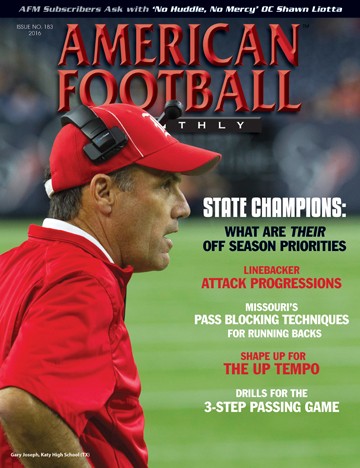Article CategoriesAFM Magazine
|
Missouri Protection - Teaching Pass Blocking Fundamentals to Running Backsby: Brian JonesRunning Backs Coach • University of Missouri © More from this issue Using the right technique, four protection drills will help your running backs protect the quarterback. When we teach protection, there are a variety of drills that I use. I start with the base of the body, which are the feet, and I work my way up to the hands and the upper body. I start with the feet because that is where everything begins. A phrase I use a lot when coaching is get the right “Body Position.” I talk to running backs about blocking the defender with their feet. The other area of great importance is their hands. Same as the feet – the RB needs to understand the position they need to have their hands in when they make contact with the defender. They want a hand position which will give them the greatest amount of striking power. The term I use is “Strike with the heels of their palms with their palms f....The full article can only be seen by subscribers.
|
|
|||||||
| HOME |
MAGAZINE |
SUBSCRIBE | ONLINE COLUMNISTS | COACHING VIDEOS |
Copyright 2025, AmericanFootballMonthly.com
All Rights Reserved





